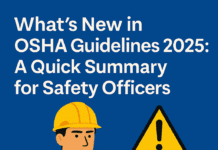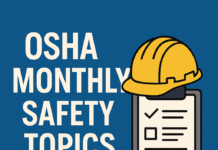
Examples of OSHA Standards
Introduction to OSHA Standards
Occupational Safety and Health Administration (OSHA) standards are regulations set forth by the United States Department of Labor to ensure safe and healthy working conditions for employees across various industries. These standards cover a wide range of topics, from general workplace safety to industry-specific hazards.
General Industry Standards
Overview
General industry standards encompass regulations applicable to workplaces not covered by specific industry standards. These standards address common workplace hazards such as fall protection, hazard communication, and respiratory protection.
Examples
- Fall Protection (29 CFR 1910.28)
- Hazard Communication (29 CFR 1910.1200)
- Respiratory Protection (29 CFR 1910.134)
Construction Industry Standards
Overview
Construction industry standards focus on the unique hazards present in construction sites, including falls, electrocution, and heavy machinery operations.
Examples
- Scaffolding (29 CFR 1926.451)
- Electrical Wiring Methods (29 CFR 1926.405)
- Cranes and Derricks (29 CFR 1926.1400)
Agriculture Standards
Overview
Agriculture standards target the specific risks associated with farming and agricultural activities, such as exposure to pesticides, machinery-related injuries, and confined spaces.
Examples
- Grain Handling Facilities (29 CFR 1910.272)
- Tractor Operations (29 CFR 1928.51)
- Respiratory Protection for Agricultural Workers (29 CFR 1910.134)
Healthcare Industry Standards
Overview
Healthcare industry standards aim to protect healthcare workers from various hazards, including exposure to infectious diseases, hazardous chemicals, and ergonomic risks.
Examples
- Bloodborne Pathogens (29 CFR 1910.1030)
- Hazardous Chemicals in Laboratories (29 CFR 1910.1450)
- Ergonomics in Healthcare (29 CFR 1910.900)
Hazard Communication Standards
Overview
Hazard communication standards require employers to inform employees about the chemical hazards present in the workplace and provide appropriate training and protective measures.
Examples
- Safety Data Sheets (SDS) (29 CFR 1910.1200)
- Labeling of Hazardous Chemicals (29 CFR 1910.1200)
- Employee Training (29 CFR 1910.1200)
Personal Protective Equipment (PPE) Standards
Overview
PPE standards mandate the use of protective equipment to minimize exposure to workplace hazards, including eye and face protection, head protection, and protective clothing.
Examples
- Eye and Face Protection (29 CFR 1910.133)
- Head Protection (29 CFR 1910.135)
- Respiratory Protection (29 CFR 1910.134)
Electrical Standards
Overview
Electrical standards regulate safe work practices when working with electricity, including wiring, equipment, and electrical systems.
Examples
- Electrical Safety-Related Work Practices (29 CFR 1910.331)
- Wiring Design and Protection (29 CFR 1910.305)
- Lockout/Tagout of Electrical Equipment (29 CFR 1910.147)
Machine Guarding Standards
Overview
Machine guarding standards aim to prevent injuries from moving machinery parts by implementing protective measures such as barriers, guards, and safety devices.
Examples
- General Requirements for All Machines (29 CFR 1910.212)
- Mechanical Power Presses (29 CFR 1910.217)
- Woodworking Machinery (29 CFR 1910.213)
Conclusion
OSHA standards play a crucial role in safeguarding workers’ health and safety across various industries. By adhering to these standards, employers can create a safer work environment and prevent workplace accidents and injuries.
List of OSHA Standards for Safety
Occupational Safety and Health Administration
HSE Training Requirements in OSHA Standards
OSHA Certification Online Free
How to Get OSHA 510 Certification
Unique FAQs
- What is the purpose of OSHA standards? OSHA standards aim to ensure safe and healthy working conditions by regulating workplace hazards and promoting employer compliance.
- Are OSHA standards mandatory for all workplaces? Yes, OSHA standards apply to most workplaces in the United States, with some exceptions for specific industries or government agencies.
- How often are OSHA standards updated? OSHA standards are periodically reviewed and updated to address emerging workplace hazards and advancements in safety technology.
- What happens if an employer violates OSHA standards? Employers who violate OSHA standards may face penalties, fines, and enforcement actions, depending on the severity of the violation and its impact on worker safety.
- Where can I find more information about OSHA standards? You can visit the official OSHA website or consult with safety professionals and regulatory experts for comprehensive information on OSHA standards and compliance.

























Please l want to register for OSHA but am in dubai now, any link to register online?
forward me new post daily/weekly